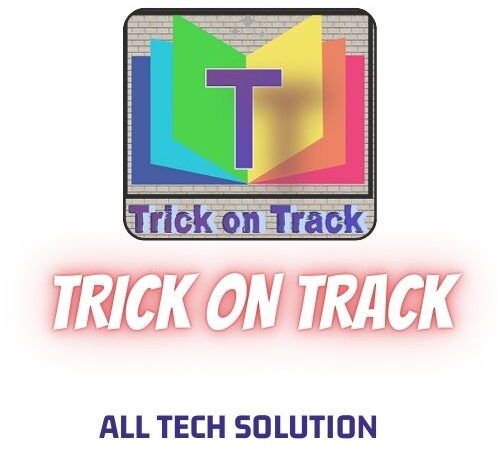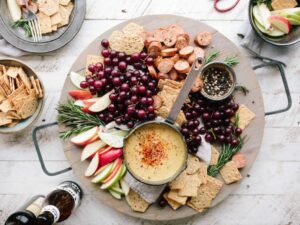क्या आपको खाने का शौक है और लिखने का शौक है? फिर एक Food Blog शुरू करना आपकी रचनात्मकता के लिए एकदम सही आउटलेट हो सकता है। हाल के वर्षों में खाद्य ब्लॉगों ने अत्यधिक लोकप्रियता हासिल की है, जो भोजन के प्रति उत्साही लोगों को अपने पाक अनुभव, व्यंजनों और युक्तियों को व्यापक दर्शकों के साथ साझा करने के लिए एक मंच प्रदान करता है। यदि आप खाद्य ब्लॉगिंग की दुनिया में कदम रखने के लिए तैयार हैं, तो यह व्यापक मार्गदर्शिका आपको एक सफल खाद्य ब्लॉग बनाने के लिए आवश्यक सभी आवश्यक जानकारी प्रदान करेगी।
1. अपना स्थान चुनना
Food Blogging की दुनिया में उतरने से पहले, अपने क्षेत्र की पहचान करना महत्वपूर्ण है। अनगिनत खाद्य ब्लॉग पहले से ही अस्तित्व में हैं, एक अनोखा दृष्टिकोण ढूंढने से आपको भीड़ से अलग दिखने में मदद मिलेगी। अपनी विशेषज्ञता और रुचियों पर विचार करें। क्या आप मास्टर बेकर हैं? क्या आप शाकाहारी भोजन में विशेषज्ञ हैं? शायद आपके पास त्वरित और आसान सप्ताहांत भोजन बनाने की क्षमता है। अपने क्षेत्र की पहचान करने से न केवल आप अलग होंगे बल्कि आपके जुनून को साझा करने वाले विशिष्ट दर्शकों को भी आकर्षित करेंगे।
2. एक आकर्षक नाम और Food Blog डोमेन का चयन करना
एक बार जब आप अपने विषय की पहचान कर लेते हैं, तो अपने खाद्य ब्लॉग के लिए एक आकर्षक नाम चुनने का समय आ जाता है। आपके Food Blog का नाम यादगार, आपके विषय को प्रतिबिंबित करने वाला और वर्तनी में आसान होना चाहिए। यह सुनिश्चित करने के लिए गहन खोज करें कि आपके द्वारा चुना गया नाम अद्वितीय है और पहले से उपयोग में नहीं है। एक बार जब आप एक नाम तय कर लें, तो एक ऐसा डोमेन सुरक्षित करें जो आपके Food Bloggers के नाम से मेल खाता हो। एक डोमेन आपके ब्लॉग का वेब पता है और एक कस्टम डोमेन होने से आपके ब्लॉग को एक पेशेवर स्पर्श मिलता है।
3. अपना ब्लॉगिंग प्लेटफ़ॉर्म सेट करना
चुनने के लिए कई लोकप्रिय ब्लॉगिंग प्लेटफ़ॉर्म हैं, जिनमें से प्रत्येक की अपनी विशेषताएं और लाभ हैं। WordPress.org अपने लचीलेपन और प्लगइन्स और थीम की व्यापक रेंज के कारण खाद्य ब्लॉगर्स के बीच एक लोकप्रिय पसंद है। यह आपको अपने ब्लॉग को अपनी अनूठी शैली और आवश्यकताओं के अनुरूप अनुकूलित करने की अनुमति देता है। अन्य लोकप्रिय प्लेटफार्मों में ब्लॉगर, विक्स और स्क्वैरस्पेस शामिल हैं। प्रत्येक प्लेटफ़ॉर्म पर गहन शोध करें और वह चुनें जो आपके Food Blog के लिए आपके दृष्टिकोण के साथ सबसे अच्छा मेल खाता हो।
4. अपना ब्लॉग डिज़ाइन करना
आपके Food Blog का डिज़ाइन पाठकों को आकर्षित करने और बनाए रखने में महत्वपूर्ण भूमिका निभाता है। एक साफ़ और देखने में आकर्षक लेआउट चुनें जो आपकी सामग्री को प्रभावी ढंग से प्रदर्शित करता हो। ऐसी रंग योजना चुनें जो आपके क्षेत्र से मेल खाती हो और एक स्वागत योग्य माहौल बनाती हो। उच्च-गुणवत्ता वाली छवियां शामिल करें जो आपके व्यंजनों का सार दर्शाती हैं। एक ऐसा लोगो शामिल करने पर विचार करें जो आपके ब्रांड की पहचान को दर्शाता हो। याद रखें, एक अच्छी तरह से डिज़ाइन किया गया ब्लॉग आपके पाठकों पर अमिट छाप छोड़ेगा।
5. आकर्षक सामग्री बनाना
किसी भी Food Blog का दिल उसकी सामग्री है। अपने पाठकों को और अधिक जानकारी के लिए वापस लाने के लिए, आकर्षक और जानकारीपूर्ण पोस्ट बनाने पर ध्यान केंद्रित करें। विभिन्न प्रकार की सामग्री के साथ प्रयोग करें, जैसे कि रेसिपी, खाना पकाने की युक्तियाँ, सामग्री स्पॉटलाइट और उत्पाद समीक्षाएँ। अपने दर्शकों से गहरे स्तर पर जुड़ने के लिए अपने व्यक्तिगत अनुभव और कहानियाँ साझा करें। अपनी पोस्ट की दृश्य अपील बढ़ाने के लिए छवियों और वीडियो सहित विभिन्न प्रकार के मीडिया का उपयोग करें।
6. एक सामग्री रणनीति विकसित करना
जब सफल ब्लॉगिंग की बात आती है तो निरंतरता महत्वपूर्ण है। एक सामग्री रणनीति विकसित करें जो यह बताए कि आप किस प्रकार की पोस्ट प्रकाशित करेंगे और कितनी बार प्रकाशित करेंगे। इससे आपको व्यवस्थित रहने में मदद मिलेगी और आपके पाठकों के लिए ताज़ा सामग्री का निरंतर प्रवाह सुनिश्चित होगा। आगे की योजना बनाने और लगातार पोस्टिंग शेड्यूल बनाए रखने के लिए एक सामग्री कैलेंडर बनाने पर विचार करें। टिप्पणियों का जवाब देकर और उनकी प्रतिक्रिया को अपनी सामग्री रणनीति में शामिल करके अपने दर्शकों से जुड़ें।
7. SEO के लिए अपनी सामग्री को अनुकूलित करना
अपने Blog की दृश्यता बढ़ाने और ऑर्गेनिक ट्रैफ़िक आकर्षित करने के लिए, अपनी सामग्री को खोज इंजनों के लिए अनुकूलित करना आवश्यक है। अपने व्यंजनों से संबंधित प्रासंगिक कीवर्ड पर शोध करें और उन्हें अपने पोस्ट में स्वाभाविक रूप से शामिल करें। पठनीयता में सुधार करने और अपनी सामग्री को अधिक स्कैन करने योग्य बनाने के लिए वर्णनात्मक शीर्षकों और उपशीर्षकों का उपयोग करें। अपनी छवियों के लिए वैकल्पिक टैग शामिल करें, क्योंकि आपके ब्लॉग को अनुक्रमित करते समय खोज इंजन भी उन पर विचार करते हैं। इसके अतिरिक्त, उच्च गुणवत्ता वाली सामग्री बनाने पर ध्यान केंद्रित करें जो आपके पाठकों को मूल्य प्रदान करे।
8. एक मजबूत सोशल मीडिया उपस्थिति का निर्माण
सोशल मीडिया प्लेटफ़ॉर्म आपके Food Blog को बढ़ावा देने और व्यापक दर्शकों तक पहुंचने के लिए शक्तिशाली उपकरण हैं। अपने व्यंजनों को प्रदर्शित करने और अपने अनुयायियों के साथ जुड़ने के लिए इंस्टाग्राम, फेसबुक और पिनटेरेस्ट जैसे लोकप्रिय प्लेटफार्मों पर खाते बनाएं। आकर्षक चित्र और वीडियो साझा करें, और संक्षिप्त विवरण प्रदान करें जो पूरी रेसिपी या पोस्ट के लिए आपके ब्लॉग से लिंक करें। अपनी खोज योग्यता बढ़ाने के लिए प्रासंगिक हैशटैग का उपयोग करें और अपनी पहुंच बढ़ाने के लिए अन्यFood Bloggers के साथ सहयोग करें।
9. अन्य Food Blog के साथ नेटवर्किंग
अन्य Food Bloggers के साथ जुड़ने से बहुमूल्य समर्थन और सहयोग के अवसर मिल सकते हैं। ऑनलाइन समुदायों और मंचों से जुड़ें जहां आप समान विचारधारा वाले व्यक्तियों के साथ बातचीत कर सकते हैं। उद्योग के पेशेवरों के साथ नेटवर्क बनाने और उनके अनुभवों से सीखने के लिए खाद्य ब्लॉगिंग सम्मेलनों और कार्यक्रमों में भाग लें। एक-दूसरे के ब्लॉग को क्रॉस-प्रमोट करने और नए दर्शकों तक पहुंचने के लिए अतिथि पोस्ट, रेसिपी स्वैप या सोशल मीडिया टेकओवर पर सहयोग करें।
10. अपने Food Blog से कमाई करना
जबकि जुनून और रचनात्मकता अधिकांश खाद्य ब्लॉगर्स को प्रेरित करती है, आपके ब्लॉग का मुद्रीकरण करना और इसे आय के स्रोत में बदलना भी संभव है। प्रायोजित पोस्ट के अवसरों का पता लगाएं, जहां ब्रांड अपने उत्पादों को बढ़ावा देने के लिए आपके साथ सहयोग करते हैं। प्रासंगिक उत्पादों और सेवाओं को बढ़ावा देकर कमीशन अर्जित करने के लिए संबद्ध विपणन कार्यक्रमों से जुड़ें। इसके अतिरिक्त, अपने दर्शकों को बेचने के लिए अपने स्वयं के उत्पाद, जैसे ई-पुस्तकें या खाना पकाने के पाठ्यक्रम, बनाने पर विचार करें।
11. अपने दर्शकों से जुड़ना
आपके Food Blog की दीर्घकालिक सफलता के लिए एक वफादार और संलग्न दर्शक वर्ग का निर्माण महत्वपूर्ण है। अपने पाठकों की टिप्पणियों और संदेशों का तुरंत और सोच-समझकर जवाब दें। उन्हें अपने व्यंजनों के साथ अपने अनुभव साझा करने और प्रतिक्रिया देने के लिए प्रोत्साहित करें। अपने दर्शकों को पुरस्कृत करने और समुदाय की भावना को बढ़ावा देने के लिए उपहार या प्रतियोगिता आयोजित करने पर विचार करें। एक स्वागत योग्य और इंटरैक्टिव स्थान बनाकर, आप एक वफादार अनुयायी विकसित करेंगे जो आपके ब्लॉग के विकास में सहायता करेगा।
12. अपने प्रदर्शन का विश्लेषण और सुधार करना
निरंतर विकास और सुधार के लिए अपने ब्लॉग के प्रदर्शन का नियमित रूप से विश्लेषण करना आवश्यक है। अपनी वेबसाइट के ट्रैफ़िक, उपयोगकर्ता व्यवहार और लोकप्रिय सामग्री को ट्रैक करने के लिए Google Analytics जैसे टूल का उपयोग करें। यह समझने के लिए रुझानों और पैटर्न को पहचानें कि आपके दर्शकों को क्या पसंद है। इस डेटा का उपयोग अपनी सामग्री रणनीति को परिष्कृत करने, अपनी वेबसाइट को अनुकूलित करने और भविष्य के सहयोग और साझेदारी के बारे में सूचित निर्णय लेने के लिए करें।
निष्कर्ष :-
अंत में, भोजन और लेखन का शौक रखने वाले लोगों के लिए खाद्य ब्लॉग शुरू करना एक पुरस्कृत और संतुष्टिदायक प्रयास हो सकता है। इस गाइड में बताए गए चरणों का पालन करके, आप एक सफल food blog बनाने के लिए अच्छी तरह से सुसज्जित होंगे जो आपके दर्शकों के साथ जुड़ता है और खाद्य ब्लॉगिंग की प्रतिस्पर्धी दुनिया में खड़ा होता है। अपनी अनूठी आवाज़ के प्रति सच्चे रहना, विभिन्न प्रकार की सामग्री के साथ प्रयोग करना और लगातार सीखने और बढ़ने के अवसरों की तलाश करना याद रखें। ब्लॉगिंग मुबारक!

